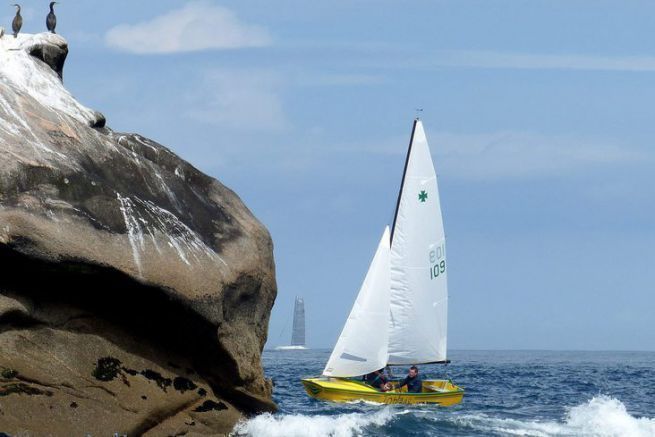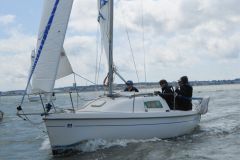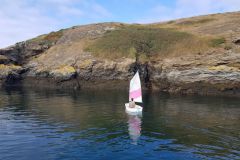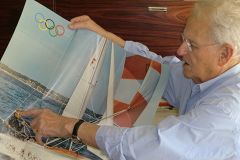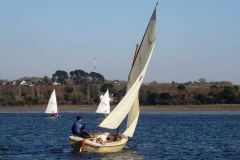A dinghy of servitude
The Caravelle was designed in 1953 by the famous architect of the time - and keen regatta sailor - Jean-Jacques Herbulot. Like the Vaurien or the Argonaute, it is one of those dinghies which allowed the democratization of sailing in the sixties. However, this was not its primary vocation.
Indeed, with a length of 4.60 m, the Caravelle - which can be rowed or sculling - is a service pram for fishermen. (Editor's note: a pram is a flat-bottomed, open utility boat). The small dinghy can be recognized by its cut bow - called marotte - which is also found on the Optimist and its sharp chine.
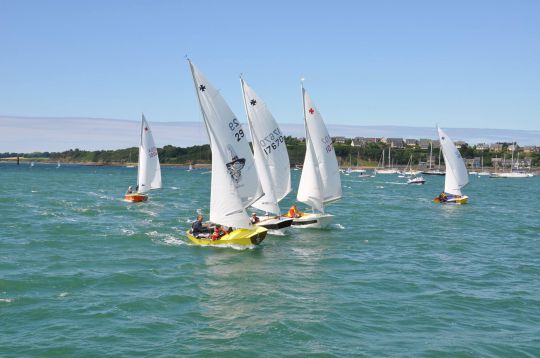
Accompanying boat at Les Glénans
Built in plywood, the Caravelle did not win over the tuna fishermen. It was then that Philippe Vianney - founder of the Glénans sailing school - decided to use her as a companion boat. The instructors used her to reach the different islands and the flotillas moored on the mooring.
Finally, the Caravelle shows very good marine qualities and is very stable. Another advantage is that it can be sailed by several people, from two to six crew members! It will be ideal for the students' training. The head of the sailing school then asked Jean-Jacques Herbulot to design a model with a rig.
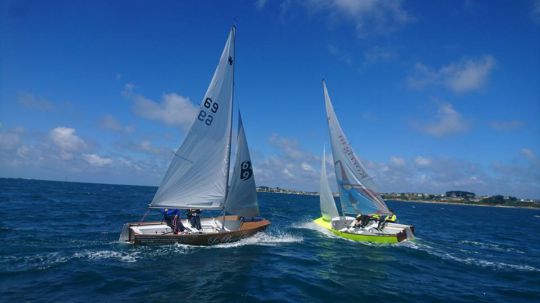
Easy to use training boat
Built at the Le Goanvic and then André Stéphan shipyard in Concarneau, with four plywood panels, the Caravelle was first equipped with a sliding daggerboard, then, from 1965, with a pivoting daggerboard. The sails - a jib and a mainsail - were made from cotton - which was later replaced by tergal - by Mr Le Rose, a master sailmaker from Concarneau.
The success is immediate! Easy to use and very safe, it provides apprentice sailors with a very simple boat and can be used at sea or on the river. Sailing, sculling, rowing and even motoring - a 15 HP outboard - the propulsion modes are numerous.
Stroll, fishing, and even regatta, the programs offered by the Caravelle are numerous! She will be one of the stars of the sailing schools from 1960 to 1990.
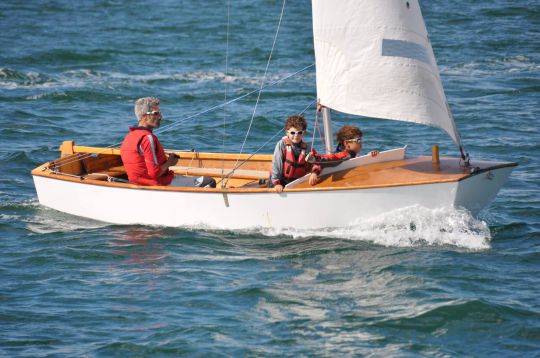
A more modern construction
The polyester construction succeeds the plywood construction and the hull becomes rounder. The AMC shipyard in Le Croisic is in charge of the modern construction. Besides the basic material, the differences do not stop there. The daggerboard becomes metallic and the mast is implanted on the keel instead of the front bench. The rudder is also different. But if they require less maintenance, these wooden caravels have several defects. They are faster than the plywood constructions - which were already not - and heavier - 210 kg for the wooden version.
Eventually, the Caravelle disappeared from sailing schools and returned to its basic use, a service boat. However, it is now sought after by amateurs who collect the models launched - about 3,500 units - or build their own model as amateurs. The dinghy also has its own association - the AS Caravelle - based in the Morlaix region. The latter organizes gatherings and regattas in which more than a hundred people participate.
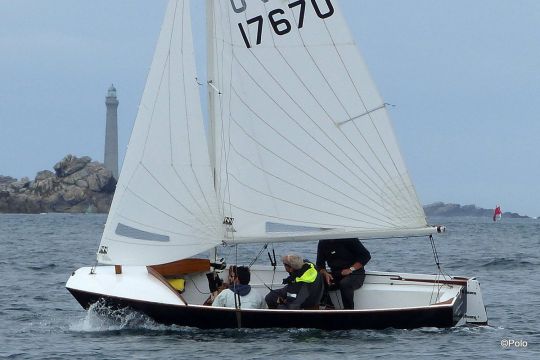
Many versions of the Caravalle
The Caravelle has been adapted to the needs and desires of boaters, which has led to many versions. It is hard to believe that its construction is within the reach of any handyman and requires little means.
Thus, at the request of the sailing schools, a sport version is born, with the intention of familiarizing the practitioners with the trapeze and the spinnaker. It is distinguished by an increased sail area (15m2), a longer mast, a sheeting car, a vang, trapezes and spinnaker of 16.50 m2. The fittings are also those of a racing dinghy.
The Caravelle-Cigogne - also called Caragogne or Caravelle pêche - is a habitable version designed for coastal cruising and equipped with a small cabin at the front topped by a raised plywood roof. A cast iron ballast under the hull and a retractable daggerboard in sheet metal, like that of the Corsaire, are located under the boat. The cabin could be used to store the engine, sails or fishing gear, and closed with a door fitted with a lock.
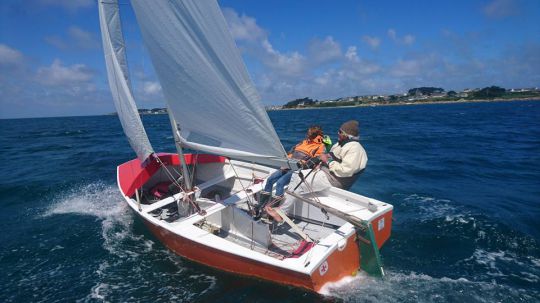
If the standard Caravelle shares the same hull as the habitable Caravelle, the latter had a much shorter success than the model with the entirely open cockpit.
Photo credits : AS Caravelle
